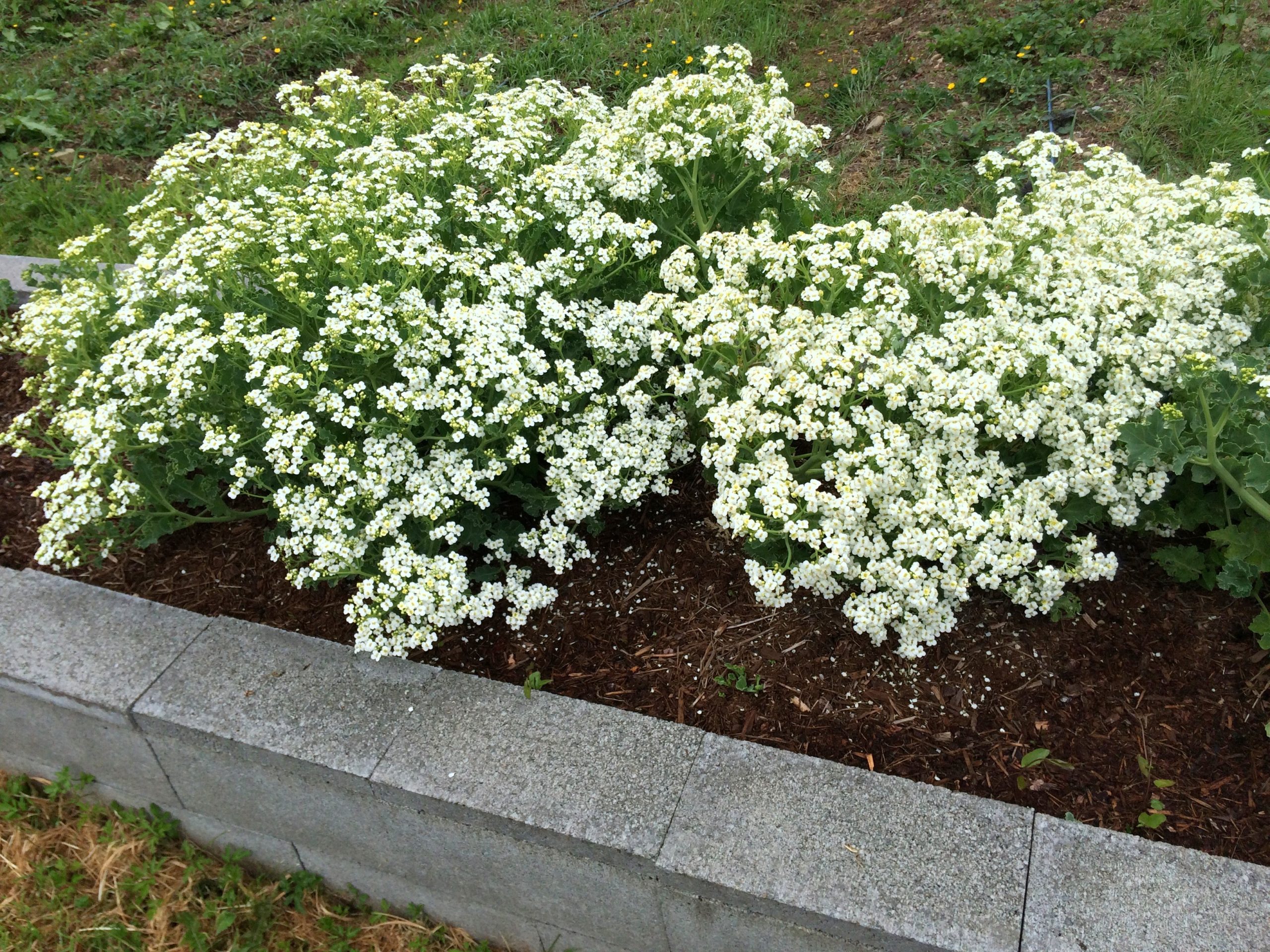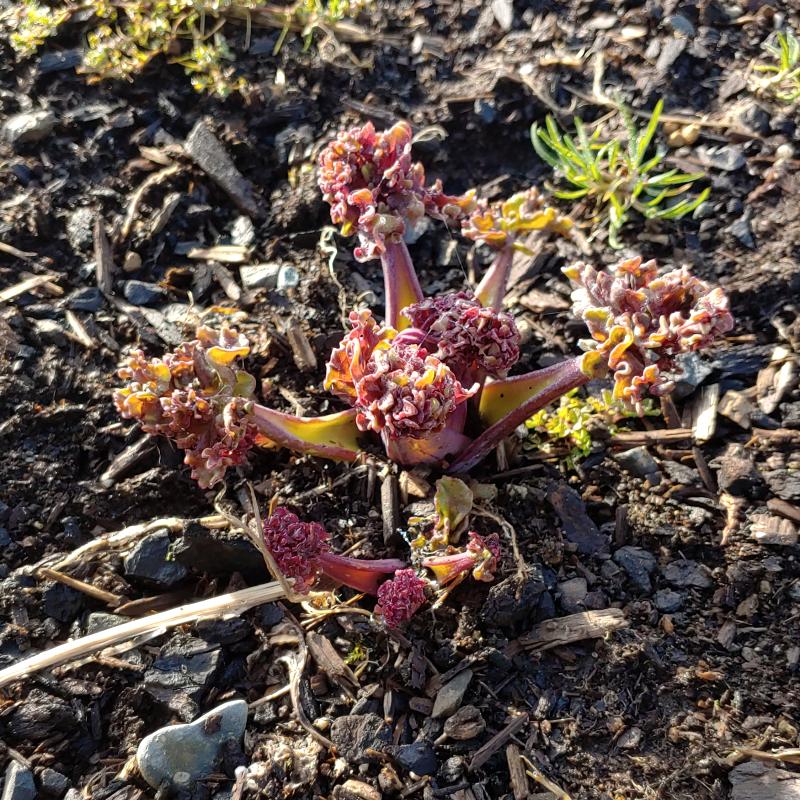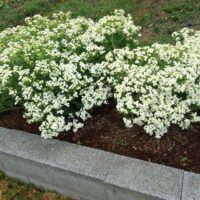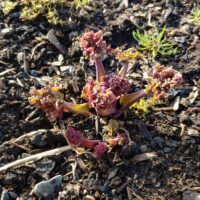No products in the cart.
Sea Kale, Yaquina Head
$6.50 – $30.00
Category: Sea Kale (Crambe maritima) and Relatives Tag: Roots & Tubers
| Sea Kale & Crambe information and growing instructions |
| Information about sea kale products and sizes |
Yaquina Head is a lighthouse sea kale. Sea kale has naturalized at a few beaches along the west coast of the USA, mostly near lighthouses. Preeminant edimentalist Stephen Barstow suggested that sea kale is probably found near lighthouses because they often had gardens in their early years, before the communities around them were well established, and sea kale was well suited to growing in seaside conditions. These populations most likely escaped their gardens in the late 1800s and early 1900s. This variety was established from a cutting taken from a plant growing near the base of the stairs at Yaquina Head, near Newport, Oregon. The light at Yaquina Head was opened in 1873. Sea kale was first reported to grow in that spot in 1915 and I collected a sample a century later in 2015. Thank goodness no one has yet identified it as a foreign invader and tried to eradicate it. Yaquina Head has green stems with a definite blue cast to the leaves. Early growth, which is always the most distinctive phase, is purple with green tips. The plants are large and sprawling when established.
James Nelson, a high school teacher from Salem, Oregon wrote the following of this population: “While on a collecting trip along the Oregon coast in the vicinity of Newport, Lincoln County, in August, 1915, I found growing on the beach at the base of the cliffs on Yaquina Head two specimens of a plant that was entirely new to me. It was past the time of flowering, but had a raceme of globular pods about the size and shape of peas, and large, thick glaucus leaves like those of cabbage. Beyond the fact that it belonged to the Cruciferae, I could make nothing of it. On sending a specimen to the Gray Herbarium, it was determined as Crambe maritima L., the “sea-kale” or “sea cabbage,” a plant native to the west coast of Europe and the shores of the Black and Baltic Seas. I supposed that it was a mere waif on our coast, and would not survive the winter storms. On revisiting the spot in July, 1918, I was delighted to find that it had not only persisted, but that the original colony has increased to some twelve vigorous specimens, with numerous plants beginning to appear. I conclude, therefore, that it has come to stay and may safely be regarded as a permanent addition to our flora.”
I don’t grow the lighthouse sea kales in large amounts. They are historically interesting and might contribute valuable genetics, but they are not superior producers. That’s not to say you won’t get good results from them. You would probably only notice differences in yield between one variety and another if you are weighing your harvest.
Only logged in customers who have purchased this product may leave a review.





Reviews
There are no reviews yet.